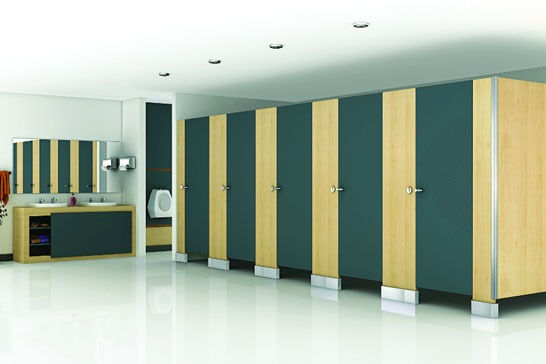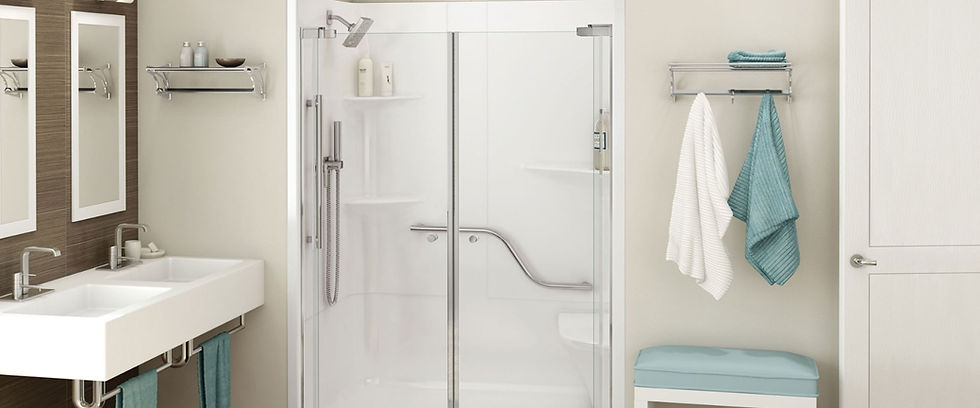The Importance of Toilet Cubicles: Enhancing Privacy, Functionality, and Aesthetics in Modern Restrooms
- Tanu Adhikari

- Dec 13, 2024
- 4 min read

In today's modern world, where hygiene, convenience, and design aesthetics are integral to public and private spaces, toilet cubicles play a crucial role. Whether it's for offices, schools, malls, airports, or public restrooms, toilet cubicles offer a vital function in maintaining privacy, cleanliness, and a comfortable experience. In this article, we explore the key aspects of toilet cubicles—why they are essential, the materials used in their construction, and how they impact the overall restroom experience.
The Purpose and Importance of Toilet Cubicles
At the heart of every public restroom are toilet cubicles designed to offer privacy and safety. These cubicles help create a personal space within a shared environment, allowing individuals to attend to their needs without the worry of privacy breaches. Additionally, they contribute to the overall organization and efficiency of a restroom, helping to avoid congestion and long queues.
Beyond just privacy, modern toilet cubicles also have a significant role in maintaining hygiene. By offering closed, secure spaces, they help contain waste and reduce cross-contamination. This is especially important in public restrooms, where hygiene standards must be maintained rigorously to prevent the spread of germs and diseases.
Materials Used in Toilet Cubicles
Toilet cubicles are constructed using a wide variety of materials, each selected for its durability, functionality, and aesthetic appeal. Let's take a closer look at the most common materials used in the manufacture of toilet cubicles:
MDF (Medium-Density Fiberboard): MDF is a versatile, cost-effective material widely used in toilet cubicles. It offers a smooth surface and can be easily customized with laminate finishes. MDF cubicles are resistant to water and can endure heavy use in public restrooms.
HPL (High-Pressure Laminate): HPL is another popular material for toilet cubicles, known for its robustness and resistance to scratches and moisture. It provides a glossy, easy-to-clean surface, making it ideal for high-traffic areas.
Solid Plastic (Polypropylene): Solid plastic cubicles are favored for their resilience against water, impact, and graffiti. These cubicles are highly durable, easy to clean, and suitable for outdoor use or areas exposed to extreme weather conditions.
Stainless Steel: Stainless steel is a high-end option for luxury restrooms, offering a sleek, modern look. It's resistant to corrosion, water damage, and is often used in high-security environments. Stainless steel cubicles require minimal maintenance and ensure longevity.
Aluminium: Aluminum toilet cubicles are lightweight, yet strong and resistant to corrosion. These cubicles offer a clean, contemporary appearance and can be used in various settings, including both commercial and residential applications.
Glass: Glass cubicles provide a sophisticated and elegant touch to restrooms. Though not as commonly used as other materials, glass cubicles are ideal for high-end, modern spaces. They are often combined with metal frames for strength and support.
Design Considerations for Toilet Cubicles
The design of toilet cubicles is equally important as the materials used. A well-thought-out design maximizes functionality, comfort, and aesthetics. Key design elements to consider include:
Size and Layout: The size of each cubicle should provide ample space for users to move around comfortably. Additionally, the layout of cubicles within the restroom must minimize wait times and optimize traffic flow.
Doors and Partitions: Toilet cubicle doors should be sturdy, easy to operate, and secure. Sliding doors, for example, save space in tight areas, while hinged doors are more traditional. Partitions between cubicles must ensure privacy without creating discomfort for users.
Ventilation: Proper ventilation is crucial for maintaining air quality and hygiene inside the cubicle. Ventilation systems must be strategically placed to prevent odors from accumulating.
Accessibility: Toilet cubicles should be designed with accessibility in mind, ensuring that individuals with disabilities have enough space and facilities to use them comfortably.
Aesthetic Appeal: The overall aesthetic of toilet cubicles contributes to the ambience of the restroom. Whether it's sleek modern finishes, contemporary colours, or eco-friendly designs, aesthetics are a key factor in creating a welcoming environment.
Benefits of High-Quality Toilet Cubicles
Privacy and Comfort: High-quality toilet cubicles ensure that users feel secure and comfortable. They offer a personal space that is essential in a public setting, improving the overall restroom experience.
Durability: Well-constructed cubicles are durable and able to withstand heavy usage, making them ideal for high-traffic areas. Materials such as stainless steel, HPL, and solid plastic ensure longevity
and require minimal maintenance.
Hygiene: High-quality materials are easy to clean, ensuring that the cubicles remain hygienic. The design of the cubicles also ensures that waste is contained, minimizing the risk of contamination.
Aesthetics: Modern toilet cubicles come in a variety of colors and finishes that contribute to the overall design of the restroom. Whether it's a sleek, contemporary style or a more classic approach, the right cubicle can enhance the entire environment.
Cost-Effectiveness: While the upfront cost of high-quality cubicles may be higher, their durability and minimal maintenance requirements make them a cost-effective long-term investment.
Conclusion
Toilet cubicles are not just functional; they are an essential part of maintaining a high standard of hygiene, privacy, and comfort in public restrooms. Whether you are designing a restroom for a commercial building, school, or healthcare facility, it is crucial to choose Toilet Cubicle Manufacturers that align with your needs and the needs of your users. By considering factors such as material durability, design, and maintenance, you can ensure that your restroom facilities remain top-notch, providing a positive experience for everyone who uses them.






Comments